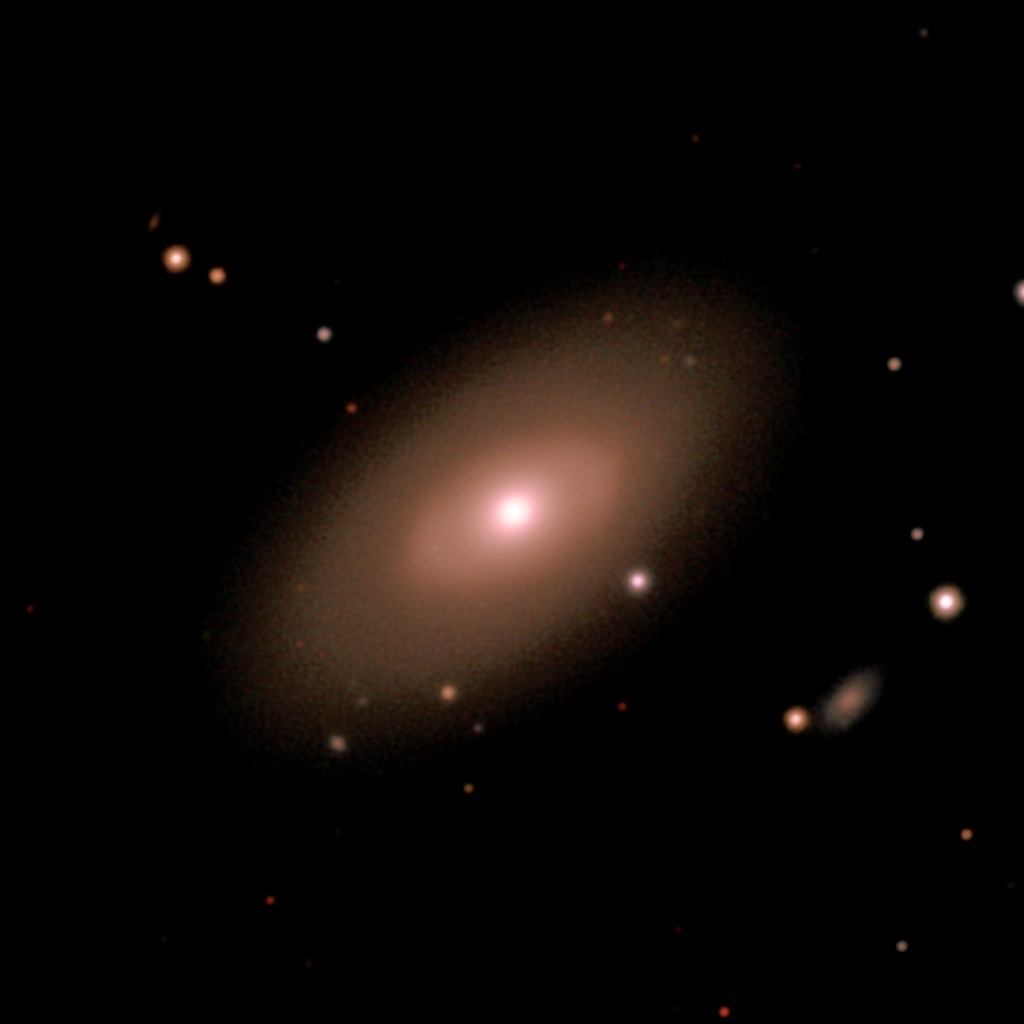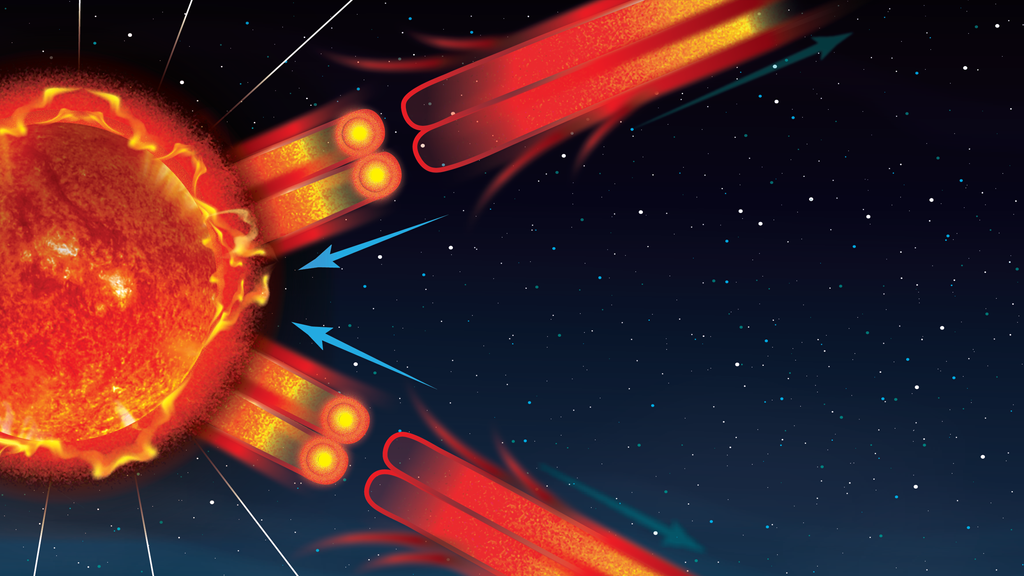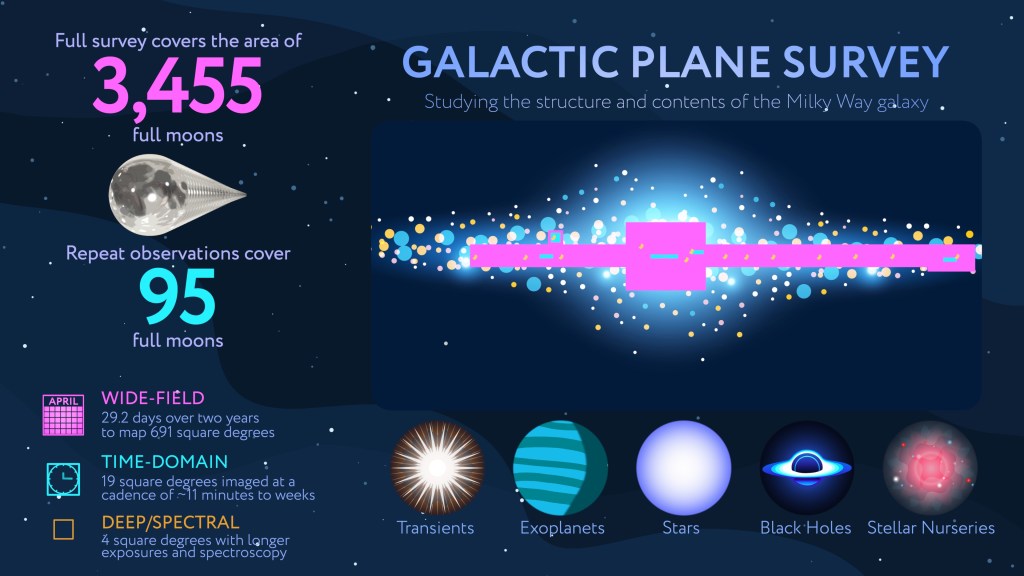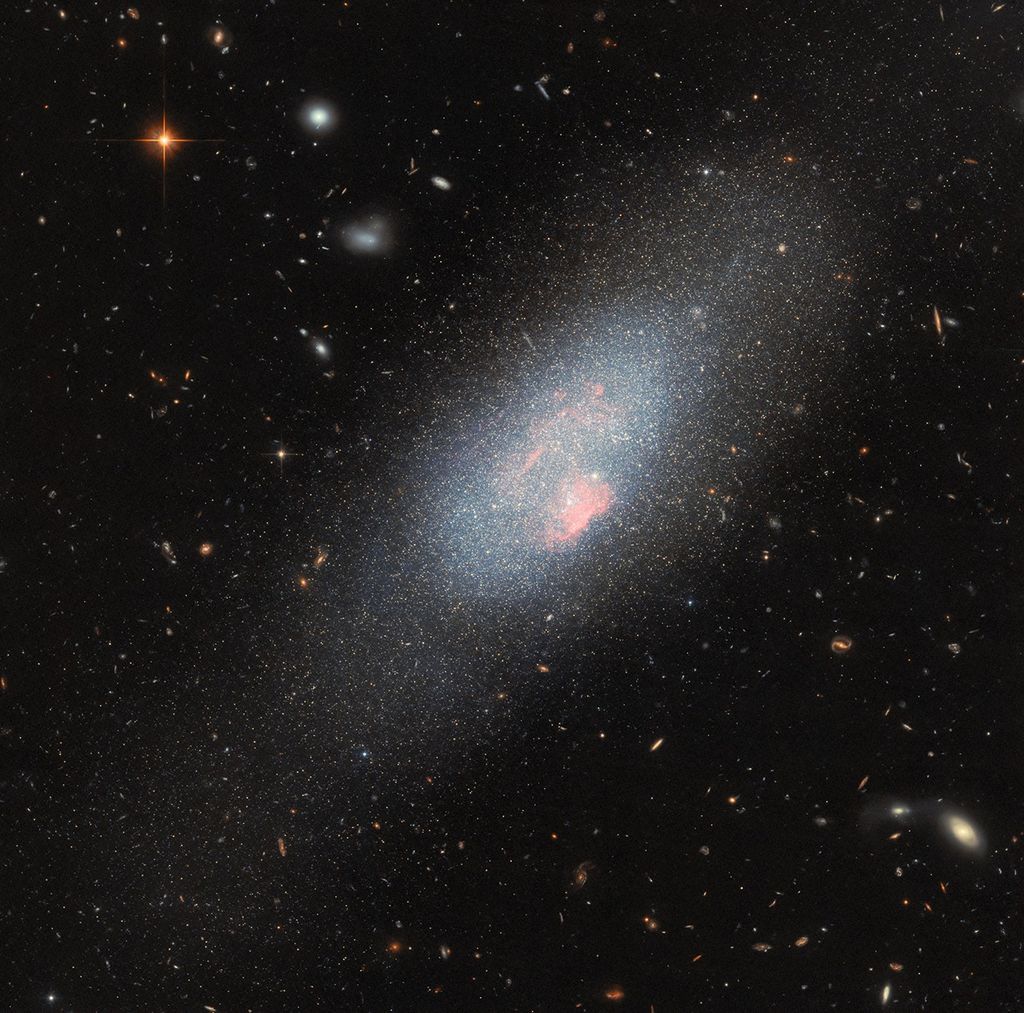1 min read
The Expanding Light Echo of Red Supergiant Star V838 Monocerotis
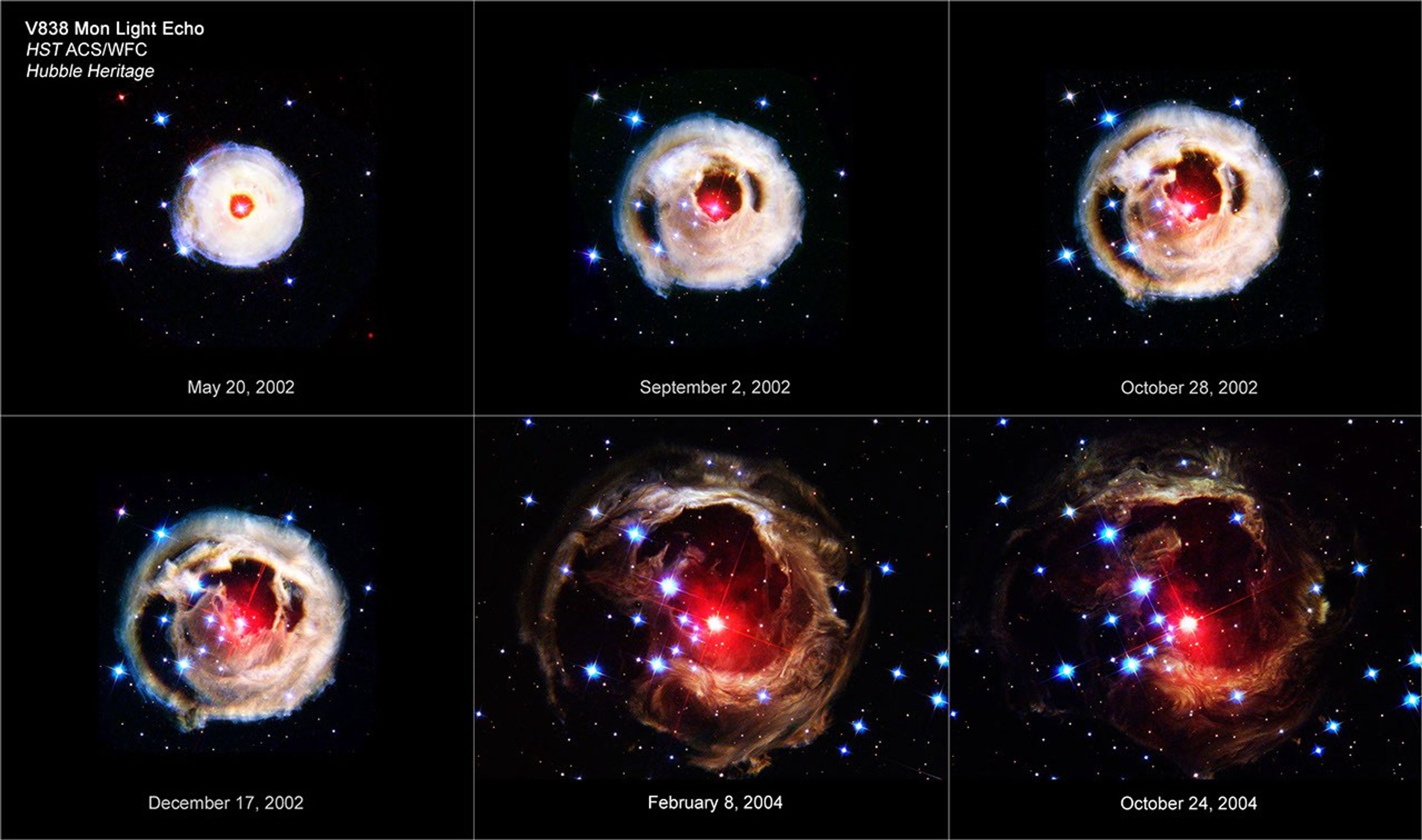
This image shows a time sequence of Hubble Space Telescope images of the light echo around V838 Mon, taken between May 2002 and October 2004. All six pictures were taken with Hubble's Advanced Camera for Surveys using filters sensitive to blue, visible, and infrared wavelengths. The apparent expansion of the light echo, as light from the early 2002 outburst of V838 Mon propagates outward into the surrounding dust, is clearly shown.
All of the images are shown at the same scale. Moreover, the images are also shown as they would appear for the same exposure times throughout the sequence. Thus the background stars appear constant in brightness, while the surface brightness of the light echo steadily declines. The fading of the light echo is primarily due to the light-scattering properties of interstellar dust. Consider a street lamp on a foggy night. The halo around the lamp is brightest right next to the lamp, while out to the side it is much fainter. Similarly, in the first V838 Mon image, taken in May 2002, the light echo was very bright and compact. At later times, we are seeing dust out to the side of the star, rather than dust that is immediately in front of the star, so the amount of light scattered in our direction is smaller. Hubble astronomers expect the light echo to continue to change its appearance and brightness over the next several years.
About the Object
- R.A. PositionR.A. PositionRight ascension – analogous to longitude – is one component of an object's position.07h 4m 4.99s
- Dec. PositionDec. PositionDeclination – analogous to latitude – is one component of an object's position.-3° 50' 50.0"
- ConstellationConstellationOne of 88 recognized regions of the celestial sphere in which the object appears.Monoceros
- DistanceDistanceThe physical distance from Earth to the astronomical object. Distances within our solar system are usually measured in Astronomical Units (AU). Distances between stars are usually measured in light-years. Interstellar distances can also be measured in parsecs.The star is ~20,000 light-years (~6 kiloparsecs) away.
About the Data
- InstrumentInstrumentThe science instrument used to produce the data.HST>ACS/WFC
- Exposure DatesExposure DatesThe date(s) that the telescope made its observations and the total exposure time.May 20, 2002 - October 24, 2004
- Object NameObject NameA name or catalog number that astronomers use to identify an astronomical object.V838 Monocerotis
- Object DescriptionObject DescriptionThe type of astronomical object.Nova-like variable star and surrounding light echo
- Release DateFebruary 3, 2005
- Science ReleaseLight Continues to Echo Three Years After Stellar Outburst
- Credit
Related Images & Videos
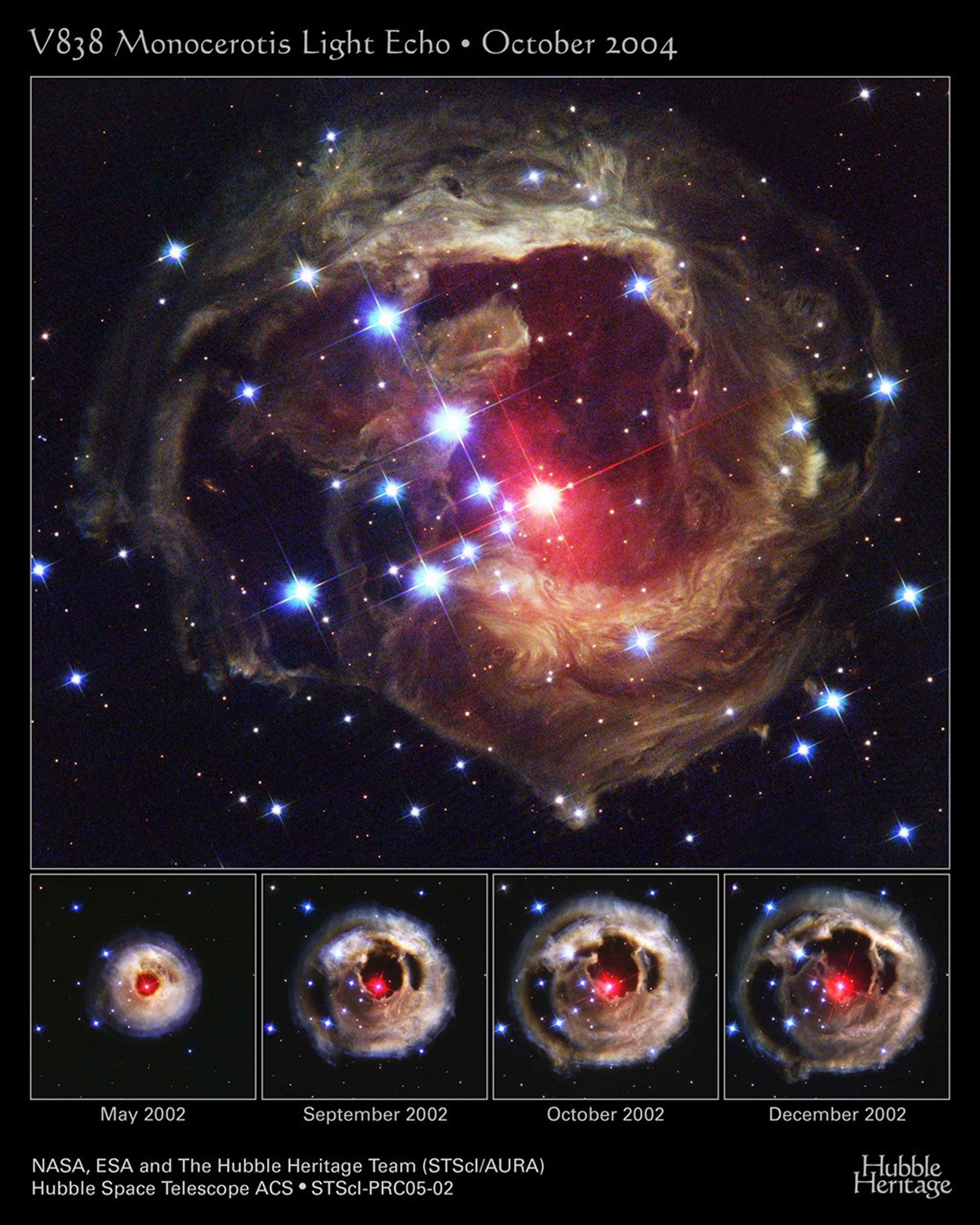
Flash From Star V838 Monocerotis Echoes Through Space
The Hubble Space Telescope's latest image of the star V838 Monocerotis (V838 Mon) reveals dramatic changes in the illumination of surrounding dusty cloud structures. The effect, called a light echo, has been unveiling never-before-seen dust patterns ever since the star suddenly...
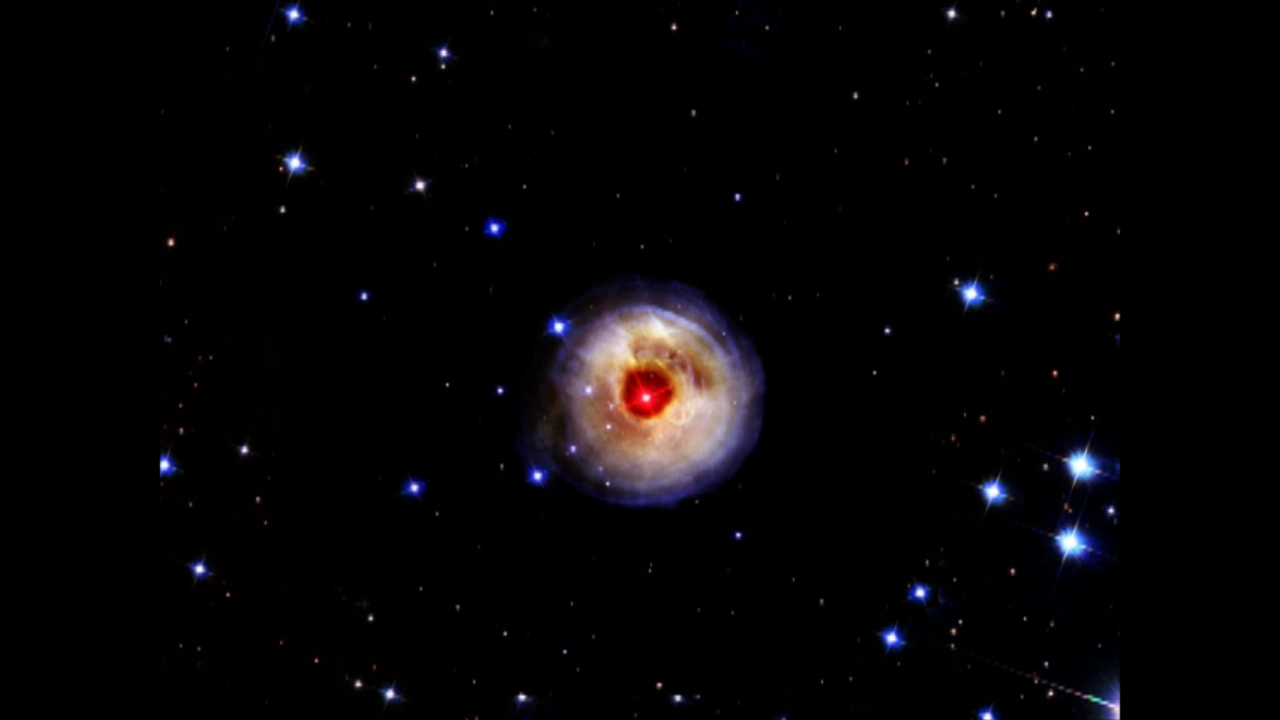
V838 Mon Light Echo Unveiling
A dissolve sequence of six images taken by Hubble's Advanced Camera for Surveys shows a CAT-scan-like probe of the three-dimensional structure of the shells of dust surrounding the aging star V838 Monocerotis. The sequence reveals dramatic changes in the way a brilliant flash of...
Share
Details
Claire Andreoli
NASA’s Goddard Space Flight Center
Greenbelt, Maryland
claire.andreoli@nasa.gov


